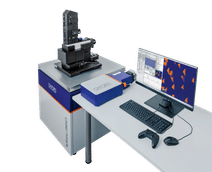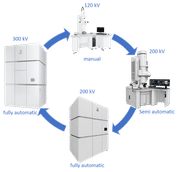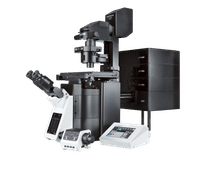Multiphoton endoscope could bring diagnostic imaging into doctors' offices
Advertisement
From precancerous lesions in the bladder to polyps in the colon, pathologists are constantly examining tissue biopsies for diagnoses. Researchers at Cornell are pushing the limits of the well-established imaging technology called multiphoton microscopy by shrinking the microscopes so they can be inserted safely into a patient's body - and minimizing the need for unnecessary biopsies.
For more than two decades, Watt W. Webb, the Samuel B. Eckert Professor in Engineering and professor of applied and engineering physics, has dreamed of making multiphoton microscopy, which he invented with colleagues in 1990, available in clinical settings to quickly image inside a person's liver, bladder, lung or any other organ. The same technology that uses two-photon excitation to harness cells' intrinsic fluorescence could be housed into the tiny end of a thin endoscope to directly image tissues or tumors.
"The motivation all along was to look at human cells," Webb said.
Webb's lab, in collaboration with Chris Xu, associate professor of applied and engineering physics, is now developing several prototypes of multiphoton endoscopes. The latest - 4 cm in length and 3 mm in diameter - is described in Proceedings of the National Academy of Sciences.
Multiphoton microscopy acquires high-resolution images deep below the surface of a tissue sample. This allows visualization of cellular details within unstained tissues that would be useful for pathologists to make diagnostic predictions.
The next-generation endoscope could minimize the need for biopsies altogether; doctors would image cancerous lesions in real time and remove only what's necessary. The endoscope would also allow doctors to examine surgical margins at high resolution in real time, potentially improving surgical outcomes.
Other Cornell researchers working on the project are postdoctoral associate Christopher Brown, graduate student David Rivera, senior research associate Dimitre Ouzounov and research associate Ina Pavlova, with assistance from graduate students Nicholas Horton, David Huland and Adam Straub.
The team collaborates with doctors at Weill Cornell Medical College, who will test the prototypes on human tissue samples. Eventually, with FDA approval, doctors hope the multiphoton endoscope can be used in lieu of, or in tandem with, a traditional low-magnification optical endoscope in the operating room.

























































